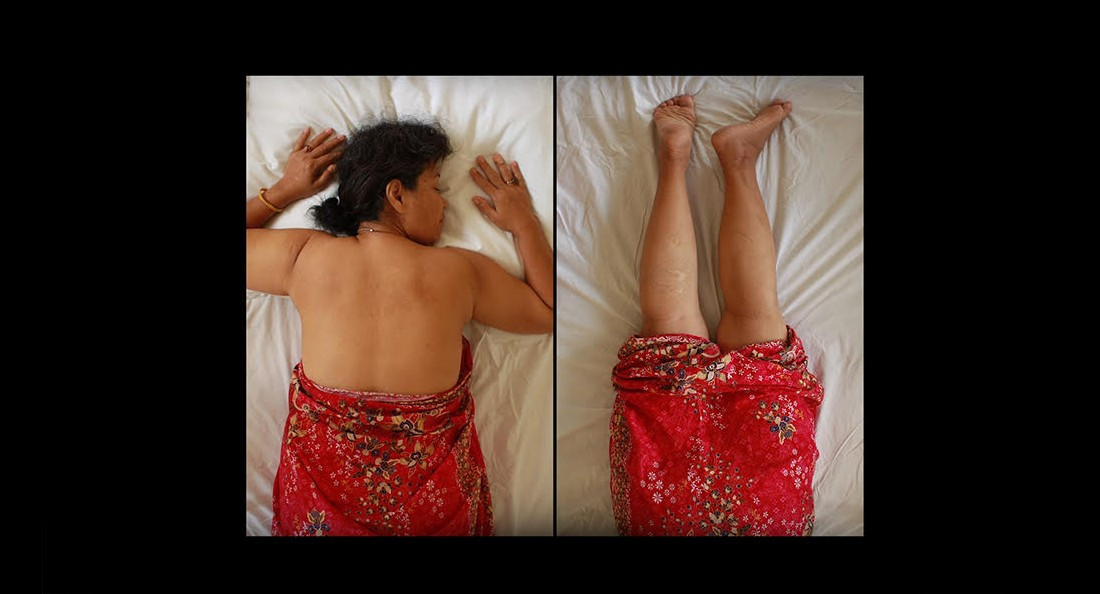CRITIPEG: Between Temporal and Permanent Histories of Pain
Lucille Kim show runs until Oct. 11 at aceart
Though often abstract and full of hidden meanings, art is also beautiful and meaningful in its simplest forms, which is something that Lucille Kim captures in Between Temporal and Permanent Histories of Pain.
As an expansion of Kim’s 1973-1979 and 1980 video projects, the exhibit is featured in a vast, white-walled room, and two 45-minute looping projections are broadcast across from each other. Each video begins with a brief textual description.
Two side-by-side videos screens show Kim’s father, lying down on a white bed, shirtless and with bruises slowly appearing on his side, back and legs.
On the other side of the room, a similar video setup shows Kim’s mother with her back exposed and the same bruises appearing.
Ambient sounds through speakers accompany the video of Kim’s father, while her mother’s video has a set of headphones playing a different, albeit similar, soundtrack.
The large space, partial nudity and projections depicting physical pain create a level of discomfort that enhances the impact of the work and ensures it will resonate with viewers.
The exhibit’s strength lies in its ability to convey a simple fact: there can be a positive relationship between pain and healing.
The bruises that appear on Kim’s parents come from Kim performing coin therapy on them. Normally referred to as Gua sha, this medical practice used throughout several Asian countries including Cambodia, involves rubbing a hard object with a smooth surface against a person’s skin until a bruise is present, which is believed to expel negative energies.
The gesture for Kim indicates her attempt to relieve her parents of their traumatic pasts. Kim’s parents lived in Cambodia during the 1970s and 1980s when the Khmer Rouge, who were responsible for the death of over two million people, were in power.
Kim captures certain traumatic events in the ambient sounds she plays. Most notably, there is an explosion sound effect that plays through the headphones at the video’s end, which relates to Kim’s mother navigating landmine fields in Cambodia and the Thai-Cambodian border to survive during the 1980s.
The combination of sound and video, Kim’s parents’ background and the illustration of coin therapy tells a powerful story.
Kim’s work shows that people can carry significantly deep wounds while their expressions and demeanour portray otherwise, and that exposing these wounds through an often-painful process can create healing and reconciliation.
This free exhibit runs from Sept. 6 to Oct. 11 at aceart (located at 290 McDermot Ave.). The gallery is open Tuesday through Saturday from 12 to 5 p.m.
Published in Volume 74, Number 5 of The Uniter (October 3, 2019)







